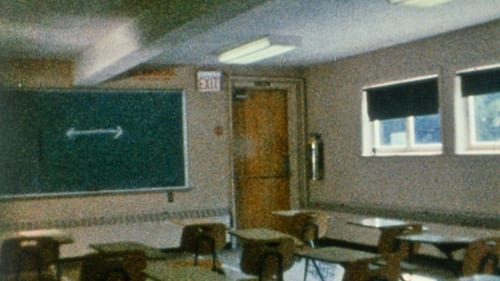July '71 in San Francisco, Living at Beach Street, Working at Canyon Cinema, Swimming in the Valley of the Moon (1971)
Gênero : Documentário
Runtime : 33M
Director : Peter B. Hutton
Sinopse
July ’71 is as much a record of the daily experiences of light and shadow as it is a catalogue of domestic life. More involved with “straight photography” than Brakhage, but far more engaged with tactility and the plastics of the image than Jonas Mekas, this early work embraces the mundane—making bread in the kitchen, riding bikes by the San Francisco Bay, hanging out in a cheap-looking flat with friends, plucking a game fowl for supper—while also paying attention to the wind, water, and trees that surround these fleeting moments.

A portrait of a dedicated filmmaker who is a charming yet elusive figure in thrall to cinema and the constant perfection of his craft.

A series of shots showing the majesty of Japan.

Short poetic documentary about the southern sea in the Netherlands.

A cheerful take on the lives of school children in a Swiss rural environment. Young pupils recite short essays they have written on subjects such as the long walk to school, the distribution of milk during breaks, and a brawl in the courtyard.

Argentina feature film.

A color-separation portrait of the Exarchia neighborhood of Athens, Greece, made during the Anti-Austerity protests in late 2011. In a place thick with stray cats and scooters, cops and Molotovs, ancient myths and new ruins; where fists are raised like so many columns in the Parthenon, this is a film of surfaces - of grafitti'd marble streets and wheat-pasted city walls - hand-processed in red, green, and blue.

Terra Incognita is a lensless film whose cloudy pinhole images create a memory of history. Ancient and modern explorer texts of Easter Island are garbled together by a computer narrator, resulting in a forever repeating narrative of discovery, colonialism, loss and departure.

Documentary about men who are fighting one of the elements in the 21st century: mine workers in Germany, king crab fishers of the Bering Sea, Russian "Smokejumpers" and astronaut training.

Six men. The forest. The menace is there somewhere. Armed, ready, looking for action, they wander, day and night, striving for a confrontation.

A documentary short in Chott el-Djerid.

Hell on Earth is an hour-long documentary presented by Mark Kermode. It's about Ken Russell's 1971 film, The Devils which is one of the most controversial films ever made. Kermode chats to Russell as well as two of the films stars Georgina Hale and Murray Melvin. Also included are scenes that were cut from the released film for being too controversial.

Using a 35mm strip of motion picture slug featuring the recently deceased American comedian Richard Pryor, this extended Rorschach assault on the eyes moves out of a flickering chaos created by incompatible film gauges into a punchline involving historically incompatible racial stereotypes.

A languid, beautifully shot collection of landscapes, edited into a whimsical and touching film.

A camera moves back and forth at an increasing pace. Back and forth, back and forth...

The third part in a series of films dealing with naturally-derived psychedelia. Shot during a performance by Rhode Island noise band Lightning Bolt, this film documents the transformation of a rock audience’s collective freak-out into a trance ritual of the highest spiritual order.

Hutton's most impressive work ... the filmmaker's style takes on an assertive edge that marks his maturity. The landscape has a majesty that serves to reflect the meditative interiority of the artist independent of any human presence. ... New York is framed in the dark nights of a lonely winter. The pulse of street life finds no role in NEW YORK PORTRAIT; the dense metropolitan population and imposing urban locale disappear before Hutton's concern for the primal force of a universal presence. With an eye for the ordinary, Hutton can point his camera toward the clouds finding flocks of birds, or turn back to the simple objects around his apartment struggling to elicit a personal intuition from their presence. ... Hutton finds a harmonious, if at times melancholy, rapport with the natural elements that retain their grace in spite of the city's artificial environment. The city becomes a ghost town that the filmmaker transforms into a vehicle reflecting his personal mood.

A film made for the Central Office of Information concerning Britain's coastline, with music by Michael Nyman.

Several figures move through the darkness on a cliff-edge. An inaudible conversation near the brow of the cliff may be the cause for the group to disband. The rest of the film follows the solitary journey of the youngest member of the group, until she rests; where land meets the sea.

A short treatise on the semiotics of capital, happiness, and phenomenology under the flickering neon of global capitalism.

In Rembrandt, Haanstra shows that it is possible to make a fascinating film only with images from paintings. He had to travel though all over Europe to numerous museums and private owners in order to film the works of art. In the work of the great painter, Haanstra recognizes his particular interest in man as an individual human being, cutting straight through all the religious motives. And Haanstra also wants to see Rembrandt as an individual.



